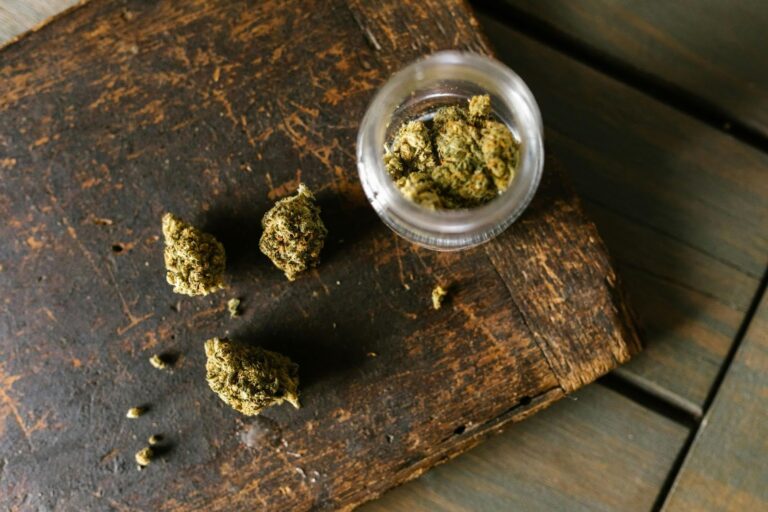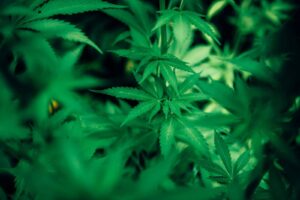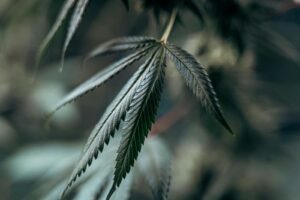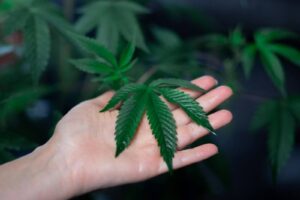Have you ever wondered if there is a way to produce high-quality cannabinoids without growing cannabis plants? Traditional cultivation requires time, land, and water, and extracting cannabinoids from plants can be inefficient and costly. The global cannabis industry is projected to reach $173.68 billion by 2032, yet supply chain challenges and environmental concerns continue to hinder its full potential.
Researchers have been searching for alternative solutions, and one breakthrough could reshape the industry. Scientists at Berkeley have successfully engineered yeast to produce THC and CBD, offering a cost-effective and scalable alternative to plant-based production.
This article explores yeast-based cannabinoid production, its benefits over conventional cultivation, and the challenges researchers have overcome. It also discusses the scientific innovations behind this technology, its potential for creating novel cannabinoids, and the future of this groundbreaking approach.
Understanding Yeast-Based Cannabinoid Production
Yeast-based cannabinoid production is transforming how cannabinoids like THC and CBD are created. By using genetic engineering and biochemical synthesis, scientists have developed a way to produce cannabinoids without growing cannabis plants. This method is faster, more efficient, and highly scalable, making it an attractive alternative to traditional cultivation and extraction.
The Science Behind Yeast-Engineered Cannabinoids
To produce cannabinoids, researchers modify yeast by introducing plant-derived genes responsible for cannabinoid biosynthesis. Researchers use gene-editing tools like CRISPR to modify yeast DNA, enabling it to produce cannabinoids precisely. CRISPR acts like molecular scissors, allowing scientists to insert plant-derived genes responsible for cannabinoid biosynthesis with high accuracy. These genetic changes enable yeast to act as tiny biochemical factories, making the same enzymes found in cannabis plants.
Once modified, yeast ferments simple sugars, converting them into precursor molecules. Engineered enzymes then trigger a series of chemical reactions that form cannabinoid acids like CBGA, the key building block for THC, CBD, and other cannabinoids.
This process mirrors the natural pathways in cannabis plants but occurs in a controlled environment. By eliminating variables like weather, pests, and soil quality, yeast-based production ensures a more predictable and efficient way to manufacture cannabinoids.
Benefits of Yeast-Based Cannabinoid Production
Traditional cannabis cultivation takes months and requires significant labor, land, and resources. Yeast-based production simplifies this by synthesizing cannabinoids directly in bioreactors, offering several key advantages:
- Faster Production: Yeast can generate cannabinoids in days rather than months, significantly accelerating manufacturing timelines.
- Consistent Quality: Controlled fermentation ensures precise cannabinoid profiles with no variation in purity or potency.
- Scalability: Bioreactors allow continuous, large-scale production without being limited by growing seasons.
- Sustainability: Requires far fewer resources than farming, reducing land use, water consumption, and pesticide reliance.
- More Efficient Research & Development: Scientists can rapidly experiment with genetic modifications to discover and produce new cannabinoids.
- Lower Carbon Footprint: Eliminates emissions from large-scale farming, transportation, and energy-intensive indoor grows.
- No Crop Loss Risks: Yeast fermentation occurs in a controlled environment, eliminating threats from pests, diseases, and weather conditions.
- Customizable Cannabinoid Profiles: Allows precise formulation of rare or specialized cannabinoids for medical and commercial applications.
- Potential for Easier Regulation: Since no cannabis plants are grown, some regions may have fewer legal restrictions on yeast-based cannabinoid production.
- New Market Opportunities: Opens the cannabinoid industry to biotech, pharmaceutical, and nutraceutical companies, expanding beyond traditional cannabis farming.
Here’s a comparison table highlighting the key differences between yeast-based cannabinoid production and traditional cannabis cultivation:
Aspect | Yeast-Based Production | Traditional Cultivation |
Speed | Days to weeks (rapid fermentation process). | Months (plant growth, harvest, and drying). |
Cost | Lower long-term costs (scalable, fewer resources). | Higher costs (land, labor, water, pesticides). |
Scalability | Highly scalable (bioreactors allow mass production). | Limited by land availability and growing seasons. |
Resource Use | Minimal (sugar, yeast, and controlled conditions). | High (water, fertilizers, pesticides). |
Purity | High (pharmaceutical-grade, no pesticides). | Variable (risk of contamination from soil/pests). |
Regulatory Ease | Easier in some regions (no cannabis plants grown). | Complex (strict regulations on cultivation). |
Cannabinoid Variety | Customizable (engineered for rare cannabinoids). | Limited to natural plant cannabinoids. |
Now, let us discuss the steps to use yeast in cannabis production for better quality output.
Steps to Use Yeast for Cannabinoid Production
Integrating yeast into cannabis production requires a precise, step-by-step approach to ensure efficiency and high-quality output. This process involves genetic modification, controlled fermentation, meticulous extraction, and stringent quality control. By following these steps, you can harness the full potential of yeast as a sustainable and scalable alternative to traditional cannabis cultivation.
1. Acquiring or Creating Genetically Modified Yeast Strains
The first step is to obtain yeast strains engineered to produce cannabinoids. Researchers typically use Saccharomyces cerevisiae (brewer’s yeast) because it is well-understood and widely used in biotechnology.
- Option 1: Purchase Pre-Engineered Yeast Strains: Some biotech companies specialize in producing yeast strains modified for cannabinoid biosynthesis. Purchasing these strains can save time and ensure reliable performance.
- Option 2: Modify Yeast In-House: If you have a genetic engineering lab, you can insert the required cannabis plant genes into yeast cells. This involves:
- Identifying the genes responsible for cannabinoid synthesis (e.g., THC synthase, CBD synthase).
- Using CRISPR or other gene-editing tools to insert these genes into the yeast genome.
- Screening and selecting the best-performing yeast strains for high cannabinoid yield.
2. Setting Up Fermentation Equipment
A bioreactor is the core piece of equipment needed for yeast-based production. This is where yeast ferments sugars and produces cannabinoids. Key equipment includes:
- Bioreactors (ranging from small lab-scale fermenters to industrial-scale systems)
- Nutrient feed systems to supply yeast with essential sugars, nitrogen, and minerals
- pH and temperature control systems to maintain optimal growth conditions
- Oxygenation systems to ensure proper yeast metabolism
- Sterile filtration and extraction units to separate and purify cannabinoids
3. Optimizing Growth Conditions
Once the yeast is introduced into the bioreactor, it requires specific conditions to maximize cannabinoid production. Key parameters include:
- Temperature: 28–30°C is ideal for most yeast strains.
- pH Levels: Keeping pH between 5.0 and 6.0 ensures efficient fermentation.
- Nutrient Supply: A balanced supply of glucose, nitrogen, and trace minerals optimizes cannabinoid synthesis.
- Aeration and Mixing: Oxygen levels must be carefully regulated to promote yeast metabolism.
- Carbon Source Optimization: While glucose is commonly used, alternative carbon sources like glycerol or galactose may enhance cannabinoid production in certain yeast strains.
- Bioreactor Design: The choice between stirred-tank reactors and airlift reactors can impact yeast efficiency, oxygen transfer, and cannabinoid yield.
- Adaptive Evolution: Over time, yeast strains can be fine-tuned through adaptive evolution to enhance their cannabinoid-producing capabilities.
4. Troubleshooting Common Fermentation Issues
- Low Cannabinoid Yield: Adjust sugar concentration, optimize enzyme activity, or modify yeast metabolism. Increasing precursor availability and fine-tuning fermentation duration may also help.
- Contamination: Use sterile fermentation techniques and test regularly for unwanted microbes. Implement strict aseptic handling procedures and consider using antimicrobial agents if necessary.
- Inconsistent Results: Standardize nutrient inputs and carefully monitor pH and temperature. Regularly calibrate equipment and establish quality control protocols to maintain consistent batch-to-batch performance. PlanaCan streamlines this by allowing you to create customizable workflows for each strain or cycle. With automated task scheduling, you can keep everything efficient and on track with just a few clicks.
- Foaming Issues: Excessive foaming can disrupt fermentation. Use antifoam agents or modify agitation settings to reduce unwanted foam formation.
- Slow Fermentation: Check for nutrient deficiencies, inadequate oxygenation, or suboptimal pH levels. Adjust these parameters accordingly to speed up the process. Tracking these factors over time is key to better yields, and PlanaCan makes it easy. It generates detailed harvest reports, capturing data on cultivation decisions and their impact. With everything in one place, you can spot trends, refine methods, and make smarter adjustments to boost efficiency and profits.
Now, let us discuss some best practices for maximizing cannabis yield and purity using yeast.
Best Practices for Maximizing Yield and Purity
Achieving high yields and pure cannabinoid extracts requires optimizing every stage of yeast fermentation and purification. Below are best practices for ensuring efficiency, consistency, and high-quality output in yeast-based cannabinoid production.
1. Fine-Tuning Fermentation Conditions
To enhance cannabinoid output, precise control over fermentation conditions is necessary:
- Sugar Concentration: The right balance of glucose and galactose can boost cannabinoid biosynthesis.
- Enzyme Optimization: Using optimized enzymes for precursor conversion increases efficiency.
- Metabolic Engineering: Enhancing yeast metabolic pathways ensures more cannabinoids are synthesized per batch.
- Oxygenation Strategies: Controlled oxygen supply can influence yeast metabolism and cannabinoid production.
- Fermentation Duration: Determining the optimal fermentation time prevents unnecessary waste while maximizing yield.
- Stress Response Management: Yeast can experience metabolic stress, which may hinder production. Adjusting environmental factors can help maintain stable output.
2. Contamination Prevention
Contamination can lower yields and affect purity. Preventative steps include:
- Using Sterile Equipment: Regularly clean and sterilize bioreactors and piping.
- Implementing Strict Quality Control Checks: Conduct microbial contamination tests before and after fermentation.
- Monitoring for Byproducts: Some yeast strains may produce unwanted byproducts that must be filtered out. PlanaCan makes it easy to streamline cultivation by automating tasks with customizable templates. Just outline each step for your strains, schedule with a few clicks, and keep workflows smooth from planting to harvest.
- Environmental Control: Maintain strict environmental monitoring to prevent external microbial contamination.
- Routine Genetic Stability Checks: Ensuring yeast strains maintain genetic integrity over multiple production cycles prevents variability in cannabinoid output.
3. Advanced Purification Techniques
Purification is a critical step in ensuring pharmaceutical-grade cannabinoids:
- Chromatography Methods: High-performance liquid chromatography (HPLC) separates pure cannabinoids from other compounds.
- Membrane Filtration: A cost-effective way to refine cannabinoid purity.
- Liquid-Liquid Extraction: Helps remove residual impurities without harsh solvents.
- Crystallization Techniques: Some cannabinoids can be crystallized for enhanced purity and stability.
- Solvent-Free Purification: Emerging technologies allow purification without chemical solvents, reducing environmental impact.
Now, let us understand how yeast is beneficial as a bioengineered factory.
Advantages of Yeast as a Bioengineered Factory
Researchers are constantly looking for more efficient and sustainable ways to produce cannabinoids. Traditional cannabis cultivation relies on chemical extraction, which can introduce impurities and environmental concerns.
Yeast-based production offers a cleaner, more controlled alternative. Biotechnology is used to synthesize cannabinoids directly, eliminating harmful chemicals and improving efficiency and purity. Below are the key advantages of using yeast as a bioengineered factory.
- Eliminating Chemical Extraction: Engineering yeast and bacteria to produce cannabinoids removes the need for chemical-heavy extraction processes. Conventional cannabis cultivation relies on solvents and other methods that can introduce impurities, making purification more complex and costly.
- Reducing Contamination Risks: With yeast, cannabinoids are synthesized directly in a controlled setting, ensuring a higher level of purity. This reduces contamination risks from pesticides, residual solvents, and other unwanted compounds often found in plant-derived extracts.
- Lowering Environmental Impact: Yeast-based production significantly reduces the carbon footprint of cannabis cultivation. Traditional farming consumes large amounts of water and energy, whereas yeast fermentation requires fewer resources. Additionally, it minimizes agricultural waste, making it a more sustainable option.
- Enhancing Production Efficiency: Yeast fermentation allows continuous, large-scale cannabinoid production without seasonal limitations. This means a stable and predictable supply, reducing price fluctuations and improving market availability.
- Expanding Research and Commercial Applications: The ability to produce cannabinoids through yeast opens doors for broader scientific research and pharmaceutical development. This method provides a scalable, controlled environment for studying known and novel cannabinoids, allowing researchers to explore new therapeutic applications.
- Improving Regulatory Compliance: Yeast-based production offers a consistent and standardized cannabinoid output, making it easier to comply with regulatory requirements. This is particularly important for medical and pharmaceutical applications, where precise dosing and purity are critical.
So, how do researchers unlock new cannabinoids using yeast and create new strains? Let us find out.
Unlocking New Cannabinoids
Cannabis plants naturally produce over 100 cannabinoids, but many exist only in trace amounts, making extraction inefficient and costly. Yeast-based production provides a breakthrough method to unlock and manufacture these rare cannabinoids at scale. Let’s explore how these innovations are pushing the boundaries of cannabinoid science and what it could mean for the future of medicine and industry.
- Access to Rare Cannabinoids: Traditional cultivation limits access to minor cannabinoids like THCV, CBG, CBC, and CBDV. Scientists can produce these compounds in higher concentrations by modifying yeast, making them more accessible for research and product development.
- Customizable Cannabinoid Profiles: Genetic engineering allows precise control over cannabinoid biosynthesis, enabling the production of tailored formulations. This is particularly useful for medical applications where specific cannabinoid ratios are required for targeted effects.
- Greater Consistency in Cannabinoid Purity: Traditional plant extraction can result in impurities due to environmental factors, pesticides, or cross-contamination. Yeast-based production ensures a cleaner, pharmaceutical-grade output with precise chemical composition.
- Accelerating Research & Development: Extracting small amounts of rare cannabinoids from plants slows down scientific progress. Yeast-based production provides a steady, scalable supply, making it easier to study the effects and therapeutic potential of lesser-known cannabinoids.
- Faster Discovery of Novel Cannabinoids: In addition to known minor cannabinoids, yeast engineering enables the synthesis of entirely new cannabinoid analogs. This could lead to groundbreaking discoveries with unique therapeutic effects.
- Improved Bioavailability: Some cannabinoids have limited absorption in the body. Yeast-based synthesis can help modify cannabinoid structures to enhance bioavailability, improving their effectiveness in pharmaceuticals and consumer products.
- Cost-Effective Production: Rare cannabinoids often require extensive plant material and complex extraction processes. Producing them through yeast fermentation eliminates these inefficiencies, reducing costs while maintaining purity and consistency.
- Expanding Therapeutic Possibilities: Some minor cannabinoids show promise for conditions like pain management, neuroprotection, appetite control, and inflammation. Yeast-based synthesis ensures a reliable supply for clinical research and pharmaceutical development.
- Environmentally Friendly Alternative: Cultivating cannabis for minor cannabinoids requires large amounts of land, water, and energy. Yeast-based production significantly reduces the environmental footprint, making cannabinoid synthesis more sustainable.
- Stable Supply Chain for Global Markets: Many cannabinoids remain scarce due to regulatory and cultivation challenges. Yeast-based production ensures a stable, scalable supply chain, supporting global access to cannabinoids for medical, wellness, and commercial use.
Using yeast requires certain regulations, rules, and licenses to bring into practice. Here are some of them that you should consider.
Regulatory and Compliance Considerations
Yeast-based cannabinoid production operates in a rapidly evolving regulatory landscape. Understanding compliance requirements is crucial for commercialization.
1. Legal Status of Yeast-Derived Cannabinoids
The legal framework for yeast-derived cannabinoids varies by country and region. Key factors include:
- U.S. FDA Regulations: The FDA currently does not regulate yeast-derived cannabinoids separately from plant-based cannabinoids. Companies must comply with pharmaceutical or dietary supplement regulations.
- European Union Compliance: The EU requires extensive safety testing for novel cannabinoids before approval for commercial sale.
- Global Trends: Many countries are revising laws to accommodate biosynthetic cannabinoids, but regulatory uncertainty remains.
- Intellectual Property Considerations: Companies must ensure that their production processes do not infringe on existing cannabinoid patents, which requires thorough legal assessments.
2. Quality and Safety Standards
To enter pharmaceutical and consumer markets, cannabinoid products must meet strict safety standards:
- GMP (Good Manufacturing Practice) Certification: Ensures safe production processes.
- THC Content Limits: Some jurisdictions impose strict limits on THC concentrations in non-psychoactive cannabinoid products.
- Purity Testing: Required to ensure no harmful byproducts or contaminants remain in the final extract.
- Stability Testing: Essential to confirm that cannabinoids maintain potency and purity over time in various storage conditions.
3. Intellectual Property and Patents
As yeast-based cannabinoid production is an emerging field, many biotech companies are patenting their methods:
- Patented Yeast Strains: Some companies hold exclusive rights to specific genetic modifications.
- Process Patents: Cover fermentation and purification techniques for cannabinoid biosynthesis.
- Freedom-to-Operate (FTO) Analysis: Essential for companies entering the market to avoid legal disputes.
- Licensing Agreements: Companies may need to negotiate access to patented methods or yeast strains for commercial production.
Support for Research and Future Potential
Yeast-based cannabinoid production is not just a breakthrough in manufacturing—it also opens new doors for scientific research and innovation. This technology has the potential to reshape the cannabis industry and advance medical applications in several key ways:
- Accelerating Cannabinoid Discovery: Traditional plant breeding limits the speed at which new cannabinoids can be studied. However, with yeast fermentation, researchers can rapidly produce rare and novel cannabinoids for pharmaceutical testing and therapeutic applications.
- Improving Medical Research: Standardized, lab-grown cannabinoids eliminate the variability found in plant-derived extracts, making clinical trials more reliable. This could lead to more consistent findings on the effects of cannabinoids on pain management, neurological disorders, and other conditions.
- Developing Custom Cannabinoid Formulations: Scientists can modify yeast to produce specific cannabinoid ratios tailored for medical treatments, wellness products, and commercial applications. This level of precision is difficult to achieve through traditional cultivation.
- Enhancing Drug Development: Pharmaceutical companies can use yeast-derived cannabinoids to create new medications, ensuring a stable and scalable supply without relying on inconsistent plant harvests.
- Expanding Scientific Understanding: By studying yeast-based cannabinoid synthesis, researchers can gain deeper insights into the biochemical pathways involved, potentially leading to new bioengineering and synthetic biology discoveries.
- Potential for Regulatory Advancements: A controlled, fermentation-based approach could help overcome legal and regulatory barriers by providing a consistent, plant-free method of cannabinoid production that aligns with pharmaceutical industry standards.
As technology evolves, yeast fermentation could become a cornerstone of cannabinoid research and medical innovation, enabling faster discoveries, more effective treatments, and broader global accessibility.
Conclusion
Yeast-based cannabinoid synthesis is transforming the industry by offering a cost-effective, environment-friendly, and scalable alternative to traditional cultivation. This breakthrough ensures a stable supply of high-quality cannabinoids while fostering medical and pharmaceutical research innovation. By eliminating the reliance on large-scale farming, yeast-based production minimizes waste, conserves resources, and provides consistent cannabinoid profiles for various applications.
To further optimize cannabis cultivation, PlanaCan provides growers with cutting-edge tools designed to enhance efficiency and maximize yields. It allows you to create customizable templates for every growth cycle stage, from planting to harvest, ensuring a smooth and repeatable process. It also offers a clear visual overview of all cultivation tasks, helping you stay on top of daily operations while planning months. Adjustments can be made effortlessly, allowing for a dynamic and responsive workflow that keeps your growth operation running smoothly.
As yeast-based production revolutionizes cannabinoid synthesis, PlanaCan empowers you to control your cultivation processes fully. Whether you are managing traditional growth or incorporating emerging technologies, PlanaCan simplifies task management, enhances productivity, and ensures consistent results. Schedule a free call today to discover how PlanaCan can streamline your cannabis operations and help you achieve optimal efficiency.




